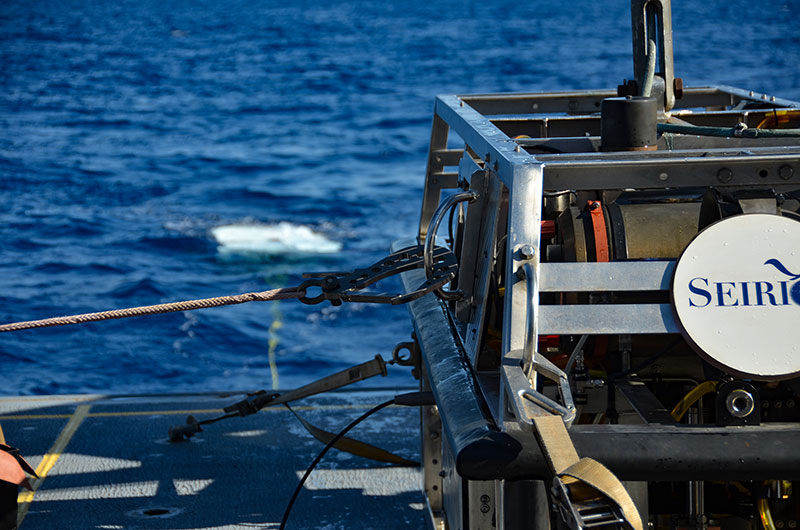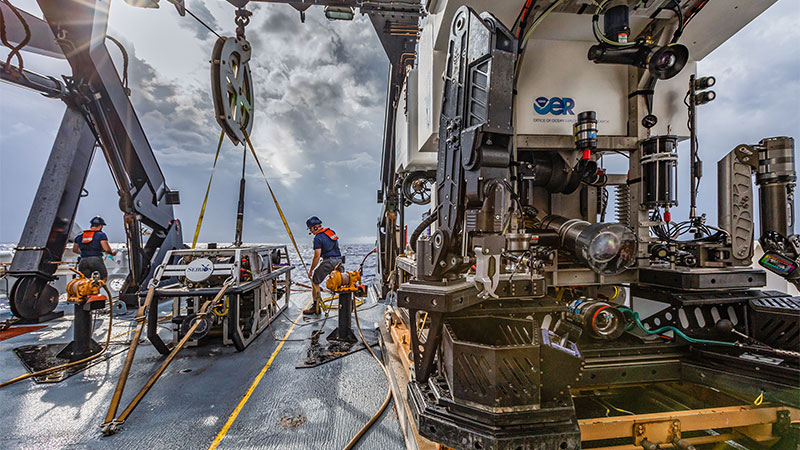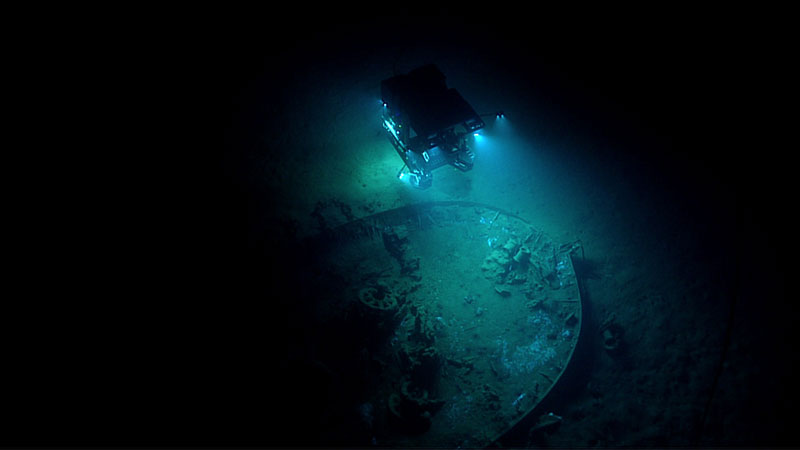
Seirios is one of two of the remotely operated vehicles (ROVs) aboard NOAA Ship Okeanos Explorer. Much like its namesake, Sirius – the brightest star in the night sky, Seirios acts as a brilliant source of light in the “night sky” of the ocean, providing illumination and a wide-angle view from above for its counterpart ROV, the Deep Discoverer (D2).
Referred to in the industry as a ‘camera sled,’ Seirios is directly tethered via a cable to the Okeanos Explorer and then is further tethered to D2. This cable provides power to the ROVs as well as a pathway for data transfer between the vehicles and the ship. This configuration allows Seirios to absorb the heave from the ship while keeping D2 stable as it explores the ocean floor and gives ROV pilots from the Global Foundation for Ocean Exploration on board the Okeanos an expanded view of D2 and surrounding areas. This tandem robot configuration allows stunning imagery to be captured for an undisturbed look at the seafloor, literally shedding light on a location’s features and inhabitants.
Seirios is equipped with a scanning 360-degree sonar as well as a series of cameras, including one high-definition camera and several standard-definition cameras. Three rear-mounted LED light banks aimed forward and below the vehicle illuminate D2 from above. Seirios is also outfitted with a complement of sensors similar to those found on D2 that measure conductivity, temperature, dissolved oxygen, depth, and other information from the ocean and help to better characterize each of the areas that are explored.
While Seirios usually isn’t the star of the show, it plays an invaluable role in allowing the dynamic duo of robots to explore the ocean together.

About the Submersible
Type
Remotely operated vehicle
Length
11.5 feet (3.5 meters)
Width
3.7 feet (1.1 meters)
Height
4 feet (1.2 meters)
Weight
3,500 pounds (1,588 kilograms)
Maximum Operating Depth
3.73 miles (6,000 meters)
Ascent/Descent Rate
82 feet (25 meters)/minute
Operating Speed
0.5 knots (maximum speed)
Operating Since
2011


